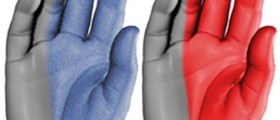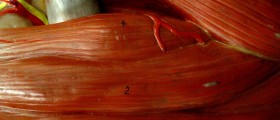
Signs that help in recognizing Pronator Teres syndrome
Pronator Teres syndrome is another term for the median nerve entrapment due to the abnormal pressure of pronator teres muscle, which is positioned near the elbow. This is why the pain that the person who suffers from this problem usually feels is located either in the forearm or in the wrist. It is true that the pain can be felt in the palm as well, more precisely near the thumb, but this does not happen often. Numbness and tingling in the palm, thumb or some other finger might be present as well, which is why people tend to mistaken this condition for carpal tunnel syndrome. Still, the difference is that the symptoms of carpal tunnel syndrome are worsened when the wrist moves, and the pain in the forearm is not so intense. Due to all these symptoms, the affected people will often feel weakness in the hand, and the symptoms will probably aggravate if they are ignored.
As for the possible causes of this condition, a direct trauma to the muscle in question or injury to the elbow are the most frequent ones. However, just as it is the case with carpal tunnel syndrome, repetitive movements or actions of the muscle in question, which are particularly common in tennis and other sports that require repetitive motion of the forearm or flexion of the elbow, can cause this syndrome as well.
Available methods of treatment for Pronator Teres syndrome
Since atrophy of the muscle is one of the most severe complications of Pronator Teres syndrome, it is necessary to do everything possible in order to avoid this. Having in mind that, when it comes to this condition, massage is one of the most effective methods of treatment, it is clear that consequences can be avoided easily. Some of the techniques that might be employed are neuromuscular therapy, trigger point therapy and deep tissue massage, but it is important to find a qualified massage therapist.
Aside from massage, there are also exercises and stretches that should be included in the treatment, and if it is necessary, anti-inflammatory medications and corticosteroid injections can be used in order to relive the pain or inflammation. The doctor might suggest the surgery as well, but this does not happen often, and it happens only when other methods of treatment fail to provide positive results and relief.
- Photo courtesy of Lubyanka by Wikimedia Commons: commons.wikimedia.org/wiki/File:Massage-hand-3.jpg

















Your thoughts on this
Loading...